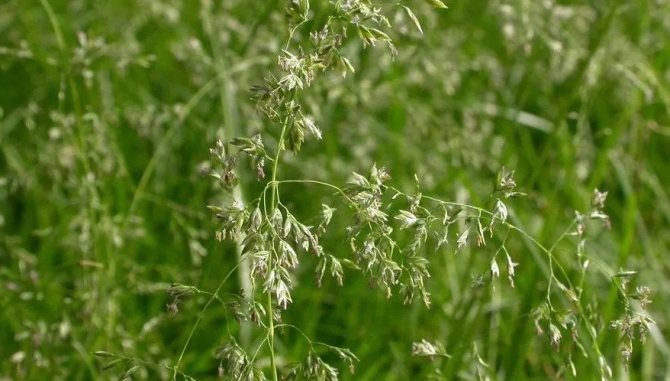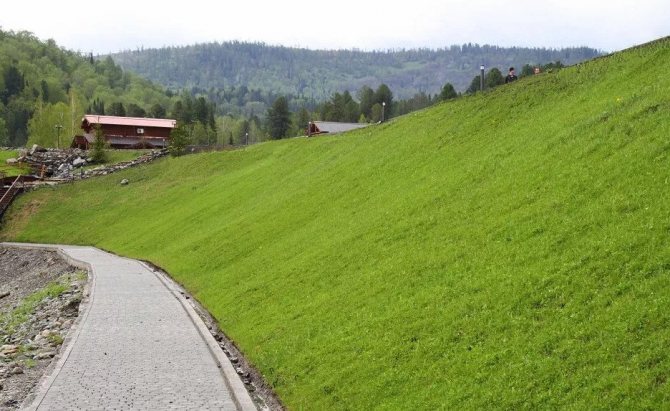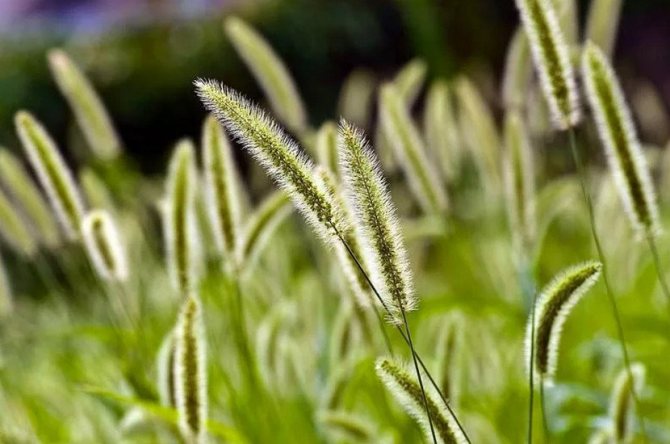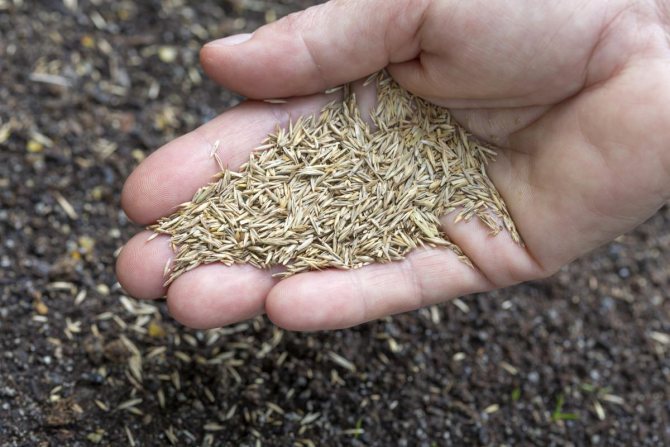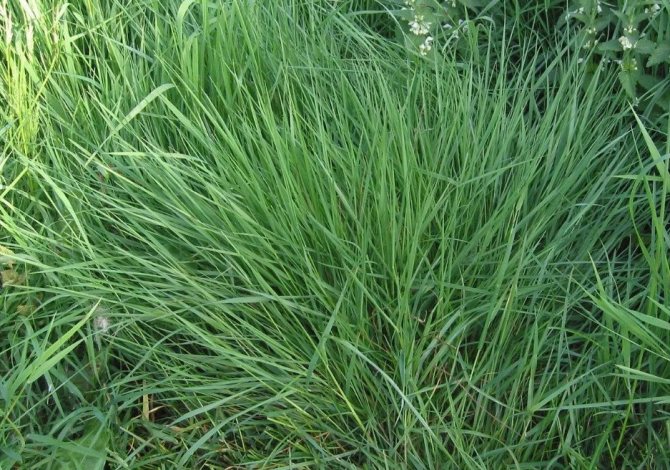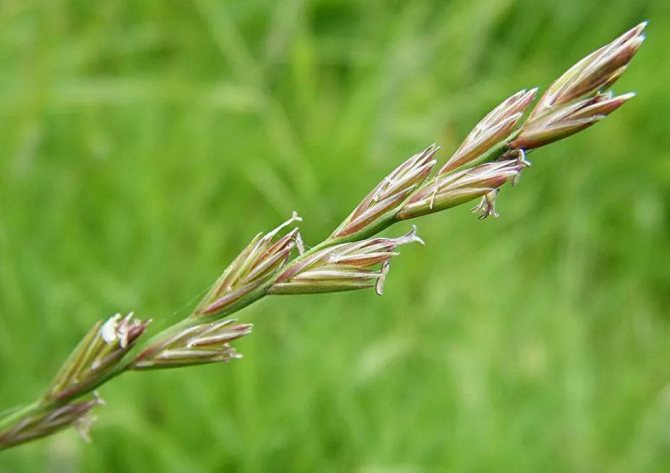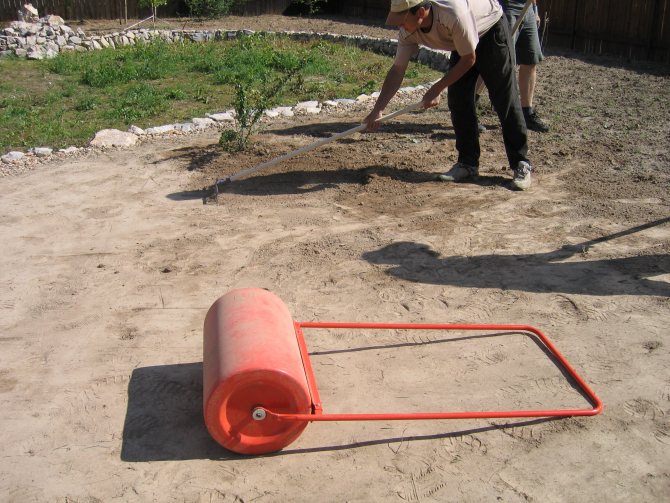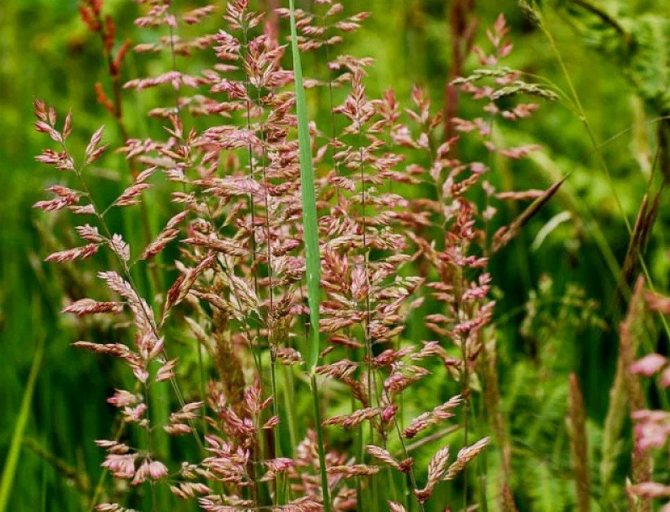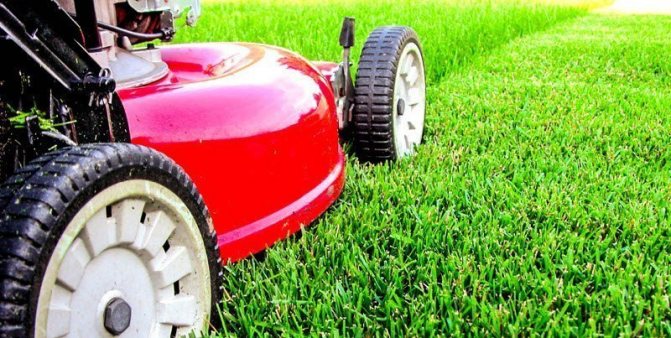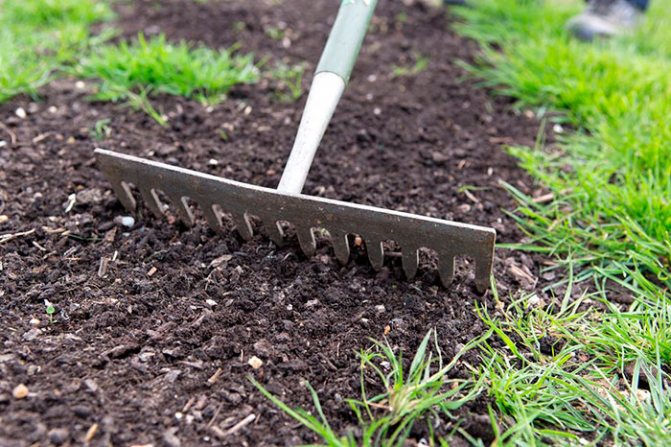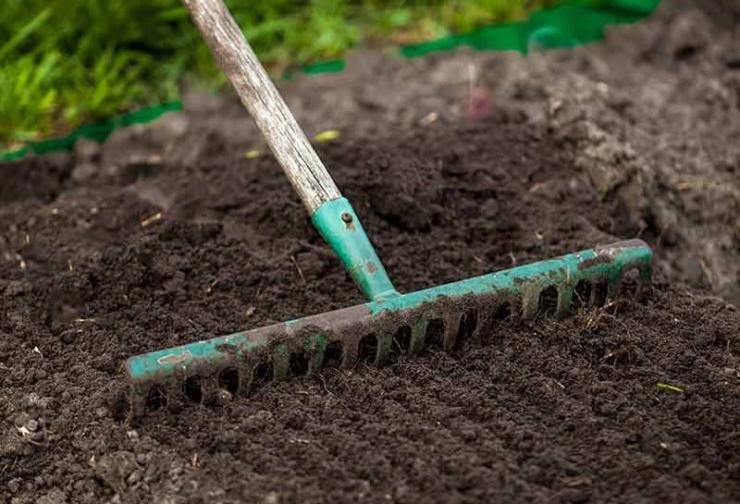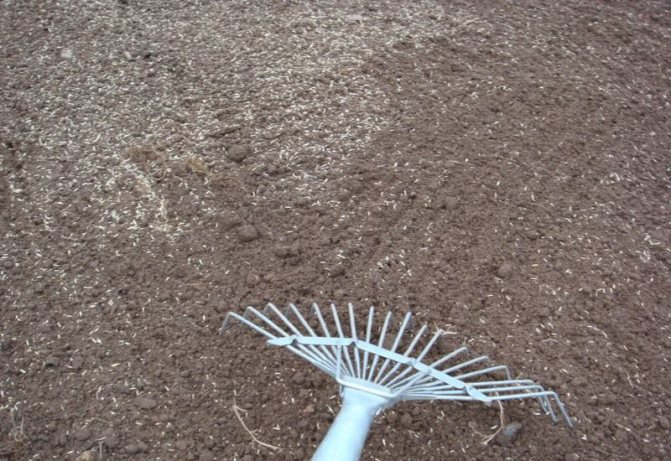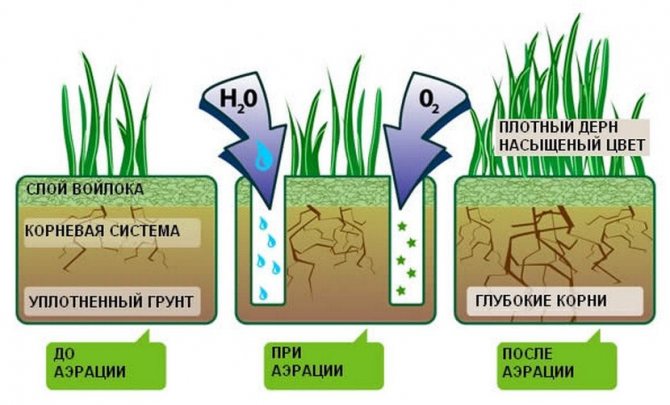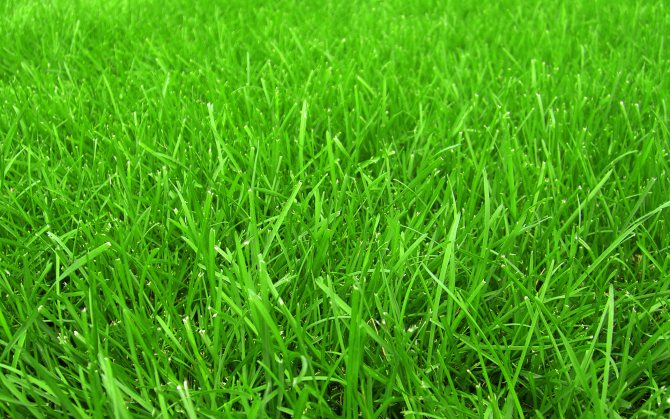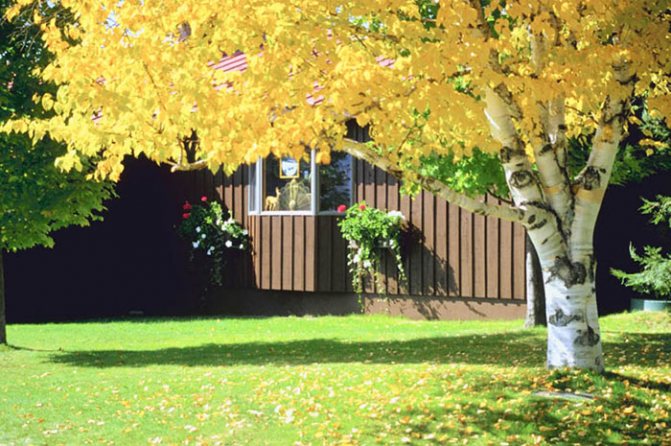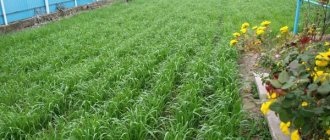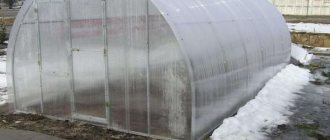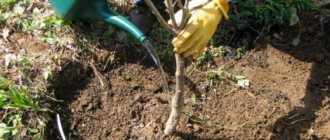
When to sow or plant lawn grass in spring or fall? When to plant a lawn in the country?
"Lawn yard on Leninsky" - we can buy excellent lawn grass mixtures, as well as find out when and how to sow it. Call for advice. Our phones in Moscow: +7, +7 (919) 99-88-770
The awakening of nature in spring leaves no one indifferent, it is joyful to observe the rich colors of spring herbs after the winter black-and-white picture. Most of us dream of having a smooth, neat lawn around the house after the snow melts. And, of course, I want the lawn to look bright and tidy, like in the photographs on the Internet. Novice gardeners ask themselves: lawn When is the best time to sow to get quick results?
There are different ways of sowing the lawn: autumn, summer, spring. Today we will talk about spring sowing, its features, pros and cons of this method. We hope that our tips on how to create a lawn in spring will be useful to you.
When to plant lawn grass - timing
Growing a flawless lawn requires not only manual planting, but also the right time of year. If you don't want your time and effort in sowing your lawn to go to waste, let's find out when is the best time to start planting your lawn. It is important to remember that lawn grass takes time to emerge and take root.
When the ground warms up a little, you can start sowing the lawn. Planting a lawn is not possible after the onset of frost. There is still no universally accepted opinion on the timing of the start of sowing. Some argue that you need to plant the lawn at the same time as the rest of the seedlings in May. They say that the earth does not warm up enough in the spring, so the ideal time is summer. Others agree that it is worth planting a lawn in the fall. Then their suburban area will be covered with a lush green carpet in early spring.
But, as practice shows, each planting season has its pros and cons, as well as rules for care and processing. When to plant lawn grass in the country in the spring?
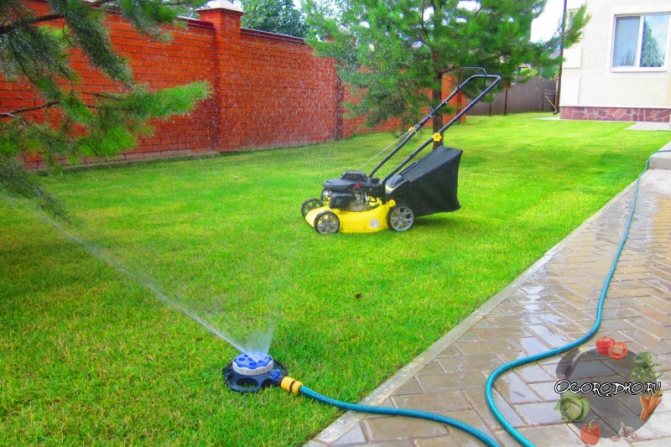

The time for planting the lawn in the spring begins in mid-April and lasts until the end of May. They choose this particular period of time for several reasons:
- the grown grass will have time to take root in the soil and get stronger
- if you are unhappy with the sowing results (the lawn grows in bunches, not an even layer), then it will be time to transplant it
- due to the abundant soil moisture in the spring, the lawn will not require additional watering, and the seeds will sprout faster
They choose the day of planting when the snow has completely melted and the weather is calm, cloudy, this is necessary for manual sowing. The seeds do not go deep into the ground, so they can be blown away by the wind. After the first weeds have sprung up, you can start sowing. Do not forget to remove the weeds first. If you do not know how to lay a roll lawn yourself, then you should familiarize yourself with some of the subtleties and nuances.
When to sow lawn grass in summer? In summer, the lawn is sown in late June - early July. Weed growth is declining, so it will be easier for young grass to root. It is necessary to carry out constant watering.
When to plant lawn grass in the fall? Favorable autumn planting season - early September.The soil is still saturated with warmth and moisture. The seeds will have time to sprout before the frost begins.
Can you sow a lawn in October? Not desirable. Rarely, the lawn is sown when the ground is frozen, shortly before the appearance of persistent snow cover. But, the probability is too small that the grass will sprout. The acceptable time for planting a lawn in the autumn-winter period is 40-45 days before the onset of frost.
Stages of preparation of the landing site
Before you start planting an ordinary lawn, you need to do a number of preparatory work.
The first is the choice of a place for the lawn
Be sure to consider how the lawn will blend in with the rest of the garden.
At this stage, it is important to determine where the lawn will be planted with a land measurement in order to determine the number of seeds, fertilizer and soil needed to plant the lawn.
When choosing a place for a lawn, it is important to think about the site being linked to the rest of the garden with strict adherence to boundaries, preventing lawn grass from spreading to flower beds, shrubs on the site.
The level of the lawn must be higher than the level of the path or court. It is important to leave a 10 cm wide strip of gravel or sand between the retaining wall and the lawn to prevent damage to the mower during mowing.
The second is the preparation of the site
At the site where the lawn will be planted, all construction work must be completed, laid is a prerequisite for areas with high humidity.
Drainage laying technology involves the removal of the top layer of soil and laying gravel, broken brick or stone on an infertile soil layer with a layer of 10-15 cm, then a layer of sand and fertile soil in layers of the same thickness, followed by compaction with a roller.
A prerequisite is cleaning garbage from the territory, removing weeds with rhizomes.
On particularly large areas, a herbicide can be used to remove weeds with strict adherence to safety regulations.
It is important to consider that in order for the drug to work, you will need to wait a few weeks and only then begin to prepare the fertile layer.
We create.
Want to plant a cotoneaster in your garden? we have an article about him.
Third - preparation of the fertile layer
The lawn roller makes it easier to tamp the soil
Mixing of the potting mix is done by hand in small areas and using specialized techniques in large areas. It is important to remove dead parts of herbicide treated plants and root systems.
Large clods of earth are broken with a shovel, after which they pass across the entire territory in a criss-cross pattern with a garden rake.
At this stage, it is important to take care of leveling the soil: filling holes, removing bumps. Uneven soil will eventually lead to defects during lawn mowing and breakage of the mower legs.
For leveling the soil, a roller is most often used. With its help, you can almost perfectly level the soil, if necessary, the procedure is carried out several times.
The ideal option is to leave the prepared soil alone for a few months for fallowing. During this time, natural shrinkage will occur, as a result of which it will be possible to determine all the surface irregularities.
In addition, in this case, it will be possible to remove newly appeared weeds on the prepared soil, which will help facilitate future lawn care.
Features of sowing lawn grass in spring and autumn
If you do not know how to properly plant a lawn, it is worth considering that before sowing the seeds of the lawn in the spring and autumn, markings are made. You can use the pegs and stretch the string. Avoid strict lines with rectangular shapes, then the lawn will look natural.Then they cultivate the land from weeds, use Roundup, or another means, plow and level with a rake.
It is necessary to sow seeds moving from sown areas to unseeded areas. Try using a planter. Then you need to water the ground with a little water. Be sure to do this with special fine spray nozzles. Keep the soil moist after sowing. Grass seeds are buried in the ground at the surface, so there is no need to water the ground in rainy and humid weather.
After sowing in the spring, after 1-2 weeks, the seeds begin to sprout. In autumn, the seed germination period can be delayed. Try not to let the earth dry out at any time. You cannot walk on a young lawn. After a month, you can start mowing the lawn when it reaches 8-10 cm. The lawn is shortened to 1.5-3 cm. Such mowing helps to form a strong root system in the lawn grass.
Why is winter sowing of the lawn preferable?
Agronomists and agricultural experts agreed that planting lawn grass before winter is much preferable. As evidence, they cite the following "iron" arguments:
- The air and soil have a fairly high humidity.
- It has not yet had time to get cold, so the temperature for seed germination remains optimal.
- Weeds hardly grow at this time.
As you can see, the conditions for good shoot formation and the formation of strong roots are more than favorable. For example, if a lawn is sown in the winter in September, it will have time to grow up to 8-10 centimeters by the first frost.
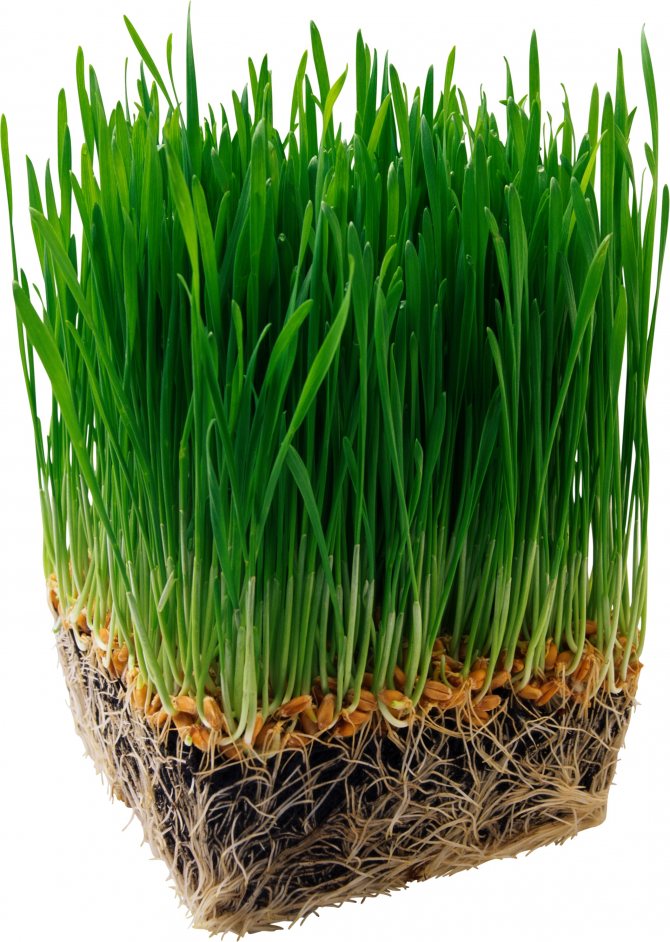

The sown lawn in September will have time to root well and germinate before winter
How to care for a young lawn after germination
After 6-7 mowing, the lawn is cut at a level of 5 cm from the ground. The plant ceases to shoot upward, it begins to grow lateral shoots. The only negative is the constant haircut. It is necessary to tame the lawn to bush, not grow up. In addition, choosing the right lawn mower will make your work on the site easier.
For mowing a freshly planted lawn, use a trimmer. It is contraindicated to use a mower with cochineine storage. A fan rake is used to collect the cut grass. The grass is harvested after it dries. It is recommended not to walk on the lawn at first. A person tramples the soil and destroys the root system of the not yet matured grass. It is important that the first-year lawn does not dry out and bloom.
Lawn care also includes feeding, a new lawn must be fed, so in the first year the plants can draw out all the useful nutrients from the soil. For the first time, the lawn is fertilized when the grass begins to germinate. In the spring, fertilizing the lawn is carried out no later than 1-2 days after the mowing, and towards the end of August, fertilization is carried out once every 2-3 weeks. In the fall, the soil is fed every 1-1.5 months.
Top dressing must be selected in accordance with the type of soil. Clay soils are fertilized once every 1-2 weeks. From sandy soils, nutrients are washed out faster, so feeding is carried out more often. It is worth looking at the state of the lawn grass, if it is sluggish and dries quickly, then it is worth increasing the frequency of feeding and watering in the absence of rain.
A cloudy day is best for fertilizing the soil. The lawn grass must be dry. There is a liquid and dry feeding method. In the liquid method, the fertilizer is dissolved in water and irrigated from a watering can. With the dry method, fertilizer is evenly scattered over the lawn; after fertilizing the soil, be sure to water the lawn with running water.
Now you know, dear readers, when to plant lawn grass in order to get a beautiful green meadow on your own plot, spending a little time and effort!
Seat selection
Sowing lawn grass begins with site selection.Grass mixtures can be planted almost anywhere on your site. Will fit:
- horizontal surface;
- the sun;
- shadow;
- slopes;
- clay and sandy soils.
In each specific case, only the amount of physical and material effort required to plant and grow a beautiful and green lawn will differ. It is best to plant grass mixtures in a sunny place where rain and melt water will not stagnate.
Before you start sowing seeds, it is advisable to think over the scheme of the future lawn and even sketch it. It will be necessary to decide whether to leave trees on the site, grow individual flowers or arrange flower beds. It is necessary to decide in advance on the placement of landscape design elements, because difficulties may arise with cutting the grown lawn grass.
If a lawn mower is to be used, then when sowing the grass, you can leave a distance of one meter between it and fences, walls or curbs for convenience. In addition, you should not plant under a lonely bush or tree.
Lawn planting rules
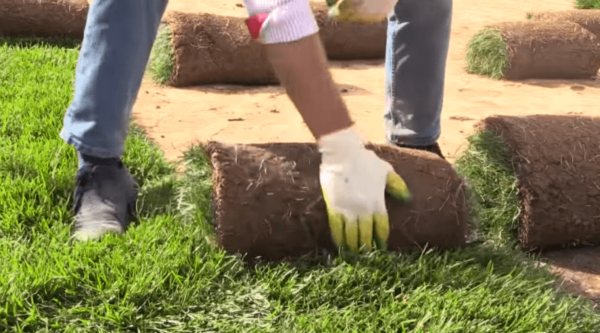

For those who find it difficult to comply with all the rules for soil preparation and planting, or there is no time, it is better to purchase ready-made lawn rolls. In nurseries, a sod layer is bred, then its upper part is cut off, together with the already formed cover, it is rolled up for transportation into rolls. After that, it is enough to lay it on the prepared ground so that it takes root in a new place. The soil is prepared in the same way as for seeds.
A roll lawn is convenient for embossed and shaded areas. Planting the seeds evenly and waiting for an even cover in such places is quite difficult and long, the finished sod layer is brought already cut, with top dressing, without weeds. But it is important not to delay planting and lay it no later than the next day after cutting.
Before laying the lawn, make sure that the area is clear of debris, unnecessary stumps, branches. For poor soils, you will need to add a layer of black soil on top, fertilizers are applied a week before the start of laying. When everything is laid, you need to water abundantly, repeating this every day for two weeks, then moisturizing is carried out as needed. After 10 days, you can start trimming.
When is the best time to sow a lawn
The following conditions for sowing a lawn are considered favorable: wet soil and temperatures up to 25 ° C. Watering abundantly after planting seeds or rainfall will improve seed germination. In principle, you can sow grass from spring to cold snap. Each sowing period has its own characteristics.
In the spring
In spring, the soil has an increased level of moisture after melting snow and frequent rains. All this contributes to better seed germination and rapid grass growth, so many people prefer this period for sowing a lawn. But it is worth considering that spring in different regions comes and goes in different ways. It is imperative to make sure that the soil warms up enough evenly and there are no thawed patches.
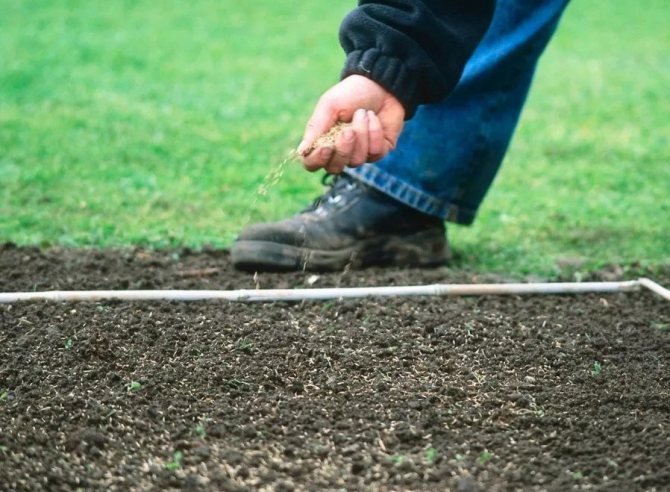

Experts recommend sowing grass for the lawn in the spring from late April to early May in temperate zones (central Russia). In more northern regions (Siberia), planting is carried out a couple of weeks later. And in the southern regions, on the contrary, this process can be carried out a couple of weeks earlier.
The biggest advantage of sowing in spring is that a stable and mature turf can be formed by the end of the season. When sowing, it is worth taking into account the shrinkage of the soil in the area for the lawn, therefore, digging and preparing the soil should be carried out in the fall. During this process, you need to add organic matter - manure, bird droppings, humus or compost. If necessary, sand, peat, lime are added to the soil. In this case, when planting seeds in spring, only mineral fertilizers are applied.
Did you know? The trimmed lawn became a popular symbol of luxury in the 18th century in European countries, and by the beginning of the next century it had become popular in America. Since the middle of the 20th century, with the introduction of lawn mowers, it has become a sign of success for middle-income households.
In autumn
In the fall, summer residents have less gardening work, so you can devote time to arranging the lawn. In addition, seeds for planting during this period become cheaper in price, and you can save money. This process can be carried out in autumn before frost - from late September to October for central Russia. It is best done before September 10–20. The date must be chosen so that at least 40 days remain before frost. This will allow the plants to grow strong enough.
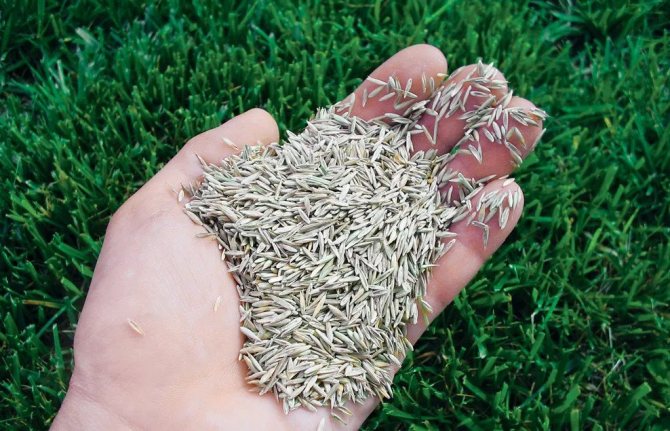

If we consider the autumn time for sowing the lawn on a monthly basis, we get the following picture:
- September... Dew in the morning will reduce the need for hydration. In this case, the seeds will sprout, and care will be needed, namely mowing before freezing. But in the spring, the lawn will delight you with its even appearance.
- October... Experts do not recommend sowing if the air temperature is above + 5 ° C. In this case, sprouts will appear, but they will not have time to get stronger before frost and will die. In the spring, not a solid patch of grass will grow, but with bald patches.
- November... If you plant at the end of this month, when the soil begins to freeze a little, then the seed material will not have time to germinate, but it will not die from the cold either. With such sowing in winter, natural stratification of seeds occurs, so in spring the early germination of the lawn is ensured. In this case, the sprouts after such hardening will not die from the spring cold snaps.
How to grow a lawn in the country - from choosing seeds to sowing
The success of the work depends on many factors, but by observing the sequence of the process and adhering to the basic rules, you will definitely achieve excellent results. Usually, work can start from the end of August to the end of September, depending on climatic and weather conditions. Before sowing seeds, you need to prepare a plot of allocated land, stock up on tools, seeds and fertilizers.
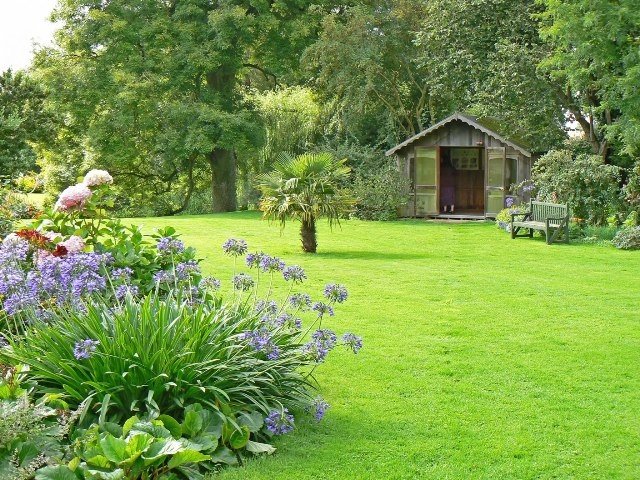

Useful for work: shovel or pitchfork, comfortable rake, cultivator or flat cutter, watering can or hose with sprinkler attachment, wide boards and gloves.
Soil preparation
Before sowing a lawn, you need to lay favorable conditions for a friendly and rapid emergence of grass shoots and its further growth. The need for fertilization depends on the type of soil. If it is acidic, then slaked lime or chalk must be added to it, and clay areas with heavy and dense soil are loosened with humus or vermicompost.
Mineral fertilizers should be applied at the same time. If the sowing is spring, then the emphasis is on nitrogen fertilization, which causes the rapid growth of grass, and in the fall, to facilitate the wintering of seeds, more potassium and phosphorus are introduced.
The soil and additives should be evenly distributed over the entire area, after which the soil is loosened and slightly moistened. The leveled section is rolled using a special roller. If irregularities and holes are suddenly found, then they are poured or cut off, and then rolled again. Once the ground is leveled, it should lie down for several days
.
How to plant?
An ideal lawn is impossible without a perfect base, the soil must be:


- smooth: a lawn with bumps and depressions cannot be cut evenly, and besides, it is easy to stumble on it, especially when running;
- dense: you cannot walk on a loose base - traces remain;
- with good filtering ability (light soil);
- fertilized;
- cleared of extraneous vegetation.
- take out all the garbage, branches from it, uproot stumps and bushes;
- align if necessary. To do this, cut off the fertile layer (20 cm) and put it in piles at the border of the site.The relief is planned, guided by a horizontally stretched rope mesh and transferring the soil from the hillocks to the depressions. Then the soil is tamped with a garden roller. Soil is poured onto the areas that sagged during tamping. After that, the fertile layer is returned to its place;
- if the soil is heavy, clayey and because of this it does not pass water well (there are puddles after rain or when snow melts), arrange a drainage cushion. First, the fertile layer is cut and folded to the side. Then another 20 cm of soil is selected and removed from the site. 10 cm of sand is poured into the resulting pit and the same amount of crushed stone is rammed. The previously removed fertile layer is laid on the pillow;
- if there is no need for leveling and the device of a drainage cushion, the site is dug up, removing the roots of the weeds.


If the site is neglected and the weed grows on it in abundance, 2-fold treatment with general herbicides with an interval of a month will help to cope with it.
When digging or when returning fertile soil after leveling (installing a drainage cushion), it is useful to add organic (humus, compost) and mineral fertilizers to it.
Mineral complexes are applied in accordance with the dosage indicated on the package: their excess will poison the soil. They again take a garden roller in their hands and pass it along the entire plot. The tool is easy to make yourself: pour cement into the old barrel, after placing a steel rod (axis) in it. Such a skating rink is dragged along on a rope, tied to an axis. Further actions depend on what kind of lawn the owner decided to acquire.
Seeds
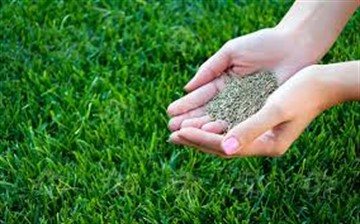

Amateur lawns are generally sown with not one, but several types of grass - a mixture of grass. Such diverse sets are more adapted to negative soil and climatic factors: of several components, at least one will develop under these conditions. When choosing a grass mixture, you should pay attention to the purpose of the lawn.
So, there are parterre lawns, very attractive, but not designed for mechanical stress. If it is supposed to walk on the lawn, choose a landscape gardening, and if you run and play - sports. On professional sports grounds, around office buildings and other high-demanding facilities, monogazons are planted, consisting of one type of grass.
Lawn care instructions
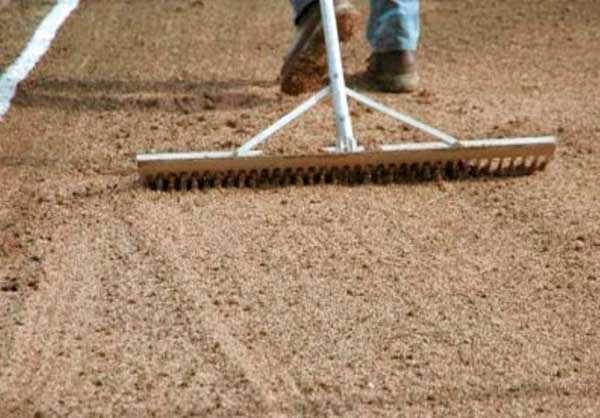

Water the lawn abundantly on the day of planting and before the first shoots emerge. You can cut it already starting from the height of the shoots of 15 cm. Until the shoots get stronger, it is better not to walk on them, further care depends on the season.
| № | In the spring | In summer | In autumn |
| 1 | Cleaning last year's foliage | Combing the grass | Collection of fallen leaves |
| 2 | Adding fertilizers with nitrogen and potassium | Adding fertilizers with nitrogen and potassium | Adding fertilizer with phosphorus |
| 3 | Watering every day | Watering 2 times a week | Watering once a week |
| 4 | Haircut from 5 to 10 cm | Regular haircut | Haircut for the winter up to 10 cm |
| 5 | Weed removal | Weed removal | Weed removal |
| 6 | Aeration | Aeration | |
| 7 | Overseeding new seeds for even cover |
Aeration is very important for development and growth - it helps to provide the soil with oxygen and the roots with moisture and fertilizers. This can be done with spiked sandals that pierce the lawn. It is enough just to walk in them on the grass. A steel aerator rake or a roller aerator (similar construction, but with the addition of a spike roller) will also work.
When it is damp and warm outside, mold or powdery mildew may develop. As soon as the first signs appear, spraying with a fungicide (Bordeaux liquid or other drugs) is required. Dry hot weather contributes to the appearance of yellowness, so that it does not exist, it should be watered more often, but only in the evenings.
Key stages of care
- Watering. Seedlings will need two or three waterings per month. Sprinkler systems with suitable sprinklers are used: immature seedlings can be knocked out of the soil.


- A haircut.Autumn grass cutting - a push for forcing new stems, stimulating root growth. The last haircut is carried out 15–20 days before the expected frost. It is impossible to leave the grass uncut: "felt" prevents germination in spring.
- Cleaning. After cutting, they are passed with a fan rake. The cut grass clogs and makes it difficult to aerate. In case of difficult air exchange, the layer of "felt" provokes rotting of the roots.
- Fertilizer. Fertilizers of the potassium-phosphorus group are introduced. Terms of introduction - until October.
- Aeration. Working with a fan rake, pitchfork - piercing the turf, caked grass, to a depth of 8 cm to exclude rotting, stagnation of water, and improve air exchange.
Attention! The last mowing is carried out when the grass of the lawn rises to 6-8 cm.
Site preparation
Before sowing the grass, the area must be cleared of weeds and leveled. Such careful preparation helps to save you from weeding later and makes it easier to mow the grown lawn. It takes 1 to 4 weeks to prepare the site.
The area should be treated with a general herbicide. Those places of the cottage, which are heavily overgrown with weeds, must be processed in several stages. When the grass withers and withers, it is necessary to free the site from debris, roots of shrubs, dried grass, after which it is leveled. If the soil is poor and needs fertile soil, then you can finally get rid of weeds by covering the lawn area with geotextiles. Thanks to this non-woven fabric, weed seeds will not be able to germinate and nothing will interfere with the lawn grass.
Seeds for sowing
Grasses suitable for planting on a lawn, having the same germination conditions, are collected in certain proportions into planting mixtures. Attention should be paid to the quality of the planting material. It is better to purchase large seeds for sowing so that there is no mustiness.
It is necessary to prepare lawn grass seeds taking into account that additional planting of material for lawn repairs may be needed at the rate of approximately one kilogram of grass mixture per hundred square meters. For greater vitality, the seeds are treated with fungicides. Fertilizers are added to the mixture to improve seedling. Herbs for sowing on the lawn (example of a mixture, calculated per m2): 8 g of meadow mint, 15 g of red fescue, 5 g of white bent, 18 g of perennial ryegrass and common fescue.

